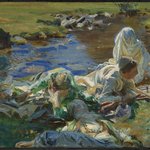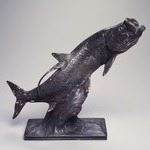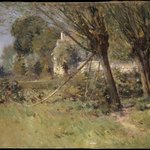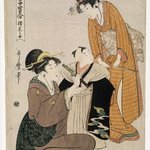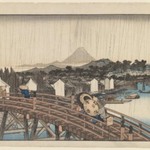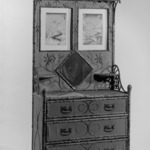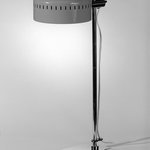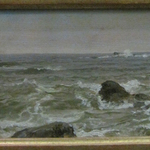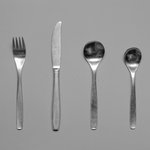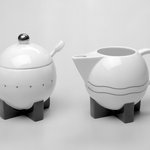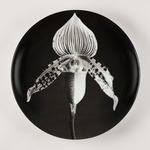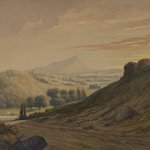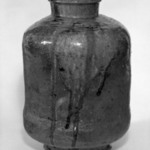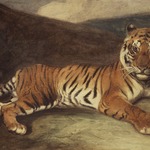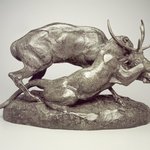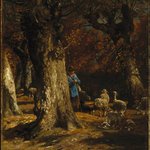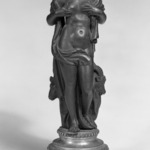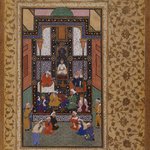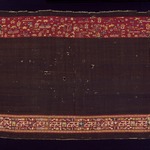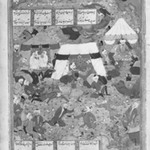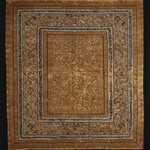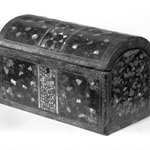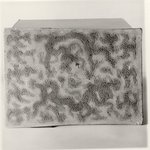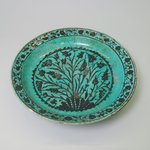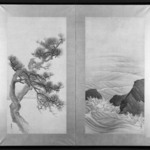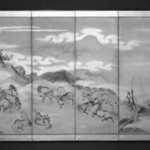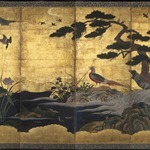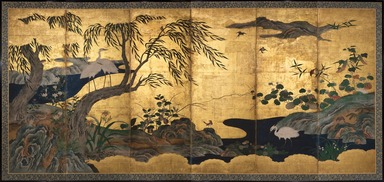
Birds and Flowers
Attributed to Kano Shôei
Asian Art
This pair of screens depicts no fewer than fifteen species of birds and at least twenty different plant types, all associated with summer and early fall. The genre of bird-and-flower painting was established in China, where many plants and animals have served as symbols for noble virtues. Although that symbolism was employed by Japanese artists as well, recent scholarship has suggested that these screens communicate a more specifically Buddhist message: the abundant life forms and otherworldly gold sky refer to Paradise as described by the Pure Land school of Buddhism. Indeed, screens such as these were occasionally displayed in Japanese Buddhist temples.
The artist, Kano Shōei, belonged to the Kano school of painters, an artistic group composed of Kano male relatives as well as talented students who were granted the family name. The Kano school provided paintings for temples and palaces in Japan’s capital cities for generations. The artists prided themselves on their knowledge of Chinese painting styles, which they adapted for Japanese tastes.
The artist, Kano Shōei, belonged to the Kano school of painters, an artistic group composed of Kano male relatives as well as talented students who were granted the family name. The Kano school provided paintings for temples and palaces in Japan’s capital cities for generations. The artists prided themselves on their knowledge of Chinese painting styles, which they adapted for Japanese tastes.
MEDIUM
Ink, color, gold leaf and gold fleck on paper
DATES
late 16th century
PERIOD
Muromachi Period
DIMENSIONS
Unfolded, overall: 68 3/4 × 147 11/16 in. (174.6 × 375.2 cm)
folded: 69 x 25 1/2 in. (175.3 x 64.8 cm)
image (outer panel): 62 3/8 x 26 7/8 in. (158.4 x 68.3 cm)
image (inner panel): 62 3/8 x 24 3/8 in. (158.4 x 61.9 cm)
(show scale)



MARKINGS
Jar-shaped seal of Shoei on rock, lower left corner.
COLLECTIONS
Asian Art
ACCESSION NUMBER
83.183.1
CREDIT LINE
Gift of Dr. and Mrs. John Fleming
CATALOGUE DESCRIPTION
Birds and Flowers. One of a pair of 6-panel screens; ink, color, gold leaf, and gold fleck on paper.
This is the left-hand screen of the pair.
The screens represent a variety of plants and animals associated with the late spring, summer, and early autumn in Japan. Prof. Matthew McKelway notes that most of the species and varieties are native to Japan, with some of the birds passing through Japan in the summer months.
Reading from right to left, the subjects are as follows:
Panel 1:Gourd, cucumber, and pumpkin vines twist around bamboo stalks, with an bird preening below (perhaps the female of the red-and-black bird in the next screen) next to bamboo grass, with three-leaf arrowhead (omodaka) at the bottom.
Panel 2: Melons and more pumpkins on vines, with an unidentified red-and-black bird on a bamboo stalk. One of two sparrows flies above, and a white egret wades below, with drawf waterlilies (hitsujigusa) and fringed waterlilies (asaza).
Panel 3: A Japanese robin (komadori) perches on a rock with a second swallow flying above.
Panel 4: Under the branches of a willow, eggplants grow with a trio of Siberian meadow buntings (hojiro) below and an unidentified bird perched above.
Panel 5: Two white egrets perch on the trunk of the willow, with orange daylilies (wasuregusa) below.
Panel 6: Siberian rubythroat (nogama) perched on another willow, above two Eurasian skylarks (hibari) on a rock, with crabgrass and gardenias in the foreground and marigold in the midground.
Blue and gold brocade borders, black lacquer wood frame with bronze fittings, stencil printing paper back.
Condition: Very minor old repairs, new 11 1/2" diagonal split near upper right of panel 4. July 11, 1984: closed open split and touched up gold leaf as follows: Upper center of left panel, upper left of second panel from left, upper center and middle right edge of third panel, upper left, lower center and middle right of fourth panel, upper left of fifth panel, upper left and center left of 6th panel. Hinges were sound. Technique: open splits, insert paper and wheat paste, close split and match gold leaf on surface. Work completed by Kazufumi Homma, restorer, in TBM Conservation lab.
Examined 6/4/90 by Sondra Castile, Conservator from the Met.
83.183.b (left-hand screen): 8/6/93: Conservator's report (record of restoration) condition: Fair. Repaired and retouched numerous times. Number of fresh tears resulting from shrinkage of the paper support. Counting the panels from left to right, the tears are located as follows: #1, top right corner; #2, top left corner; #3, top and bottom right corner; #4, top left and bottom left and right corner; #5, top right corner; #6, top left. The screen itself is in fairly good condition. The silk borders are discolored and worn, and lifting at the far left top corner. Treatment; the torn areas were re-adhered, as was the silk border at top left. The gaps between the edges of the torn paper were inpainted. Lifting areas were re-adhered. (JD)
MUSEUM LOCATION
This item is not on view
CAPTION
Attributed to Kano Shôei (Japanese, 1519–1592). Birds and Flowers, late 16th century. Ink, color, gold leaf and gold fleck on paper, Unfolded, overall: 68 3/4 × 147 11/16 in. (174.6 × 375.2 cm). Brooklyn Museum, Gift of Dr. and Mrs. John Fleming, 83.183.1. Creative Commons-BY (Photo: , 83.183.1_PS11.jpg)
IMAGE
overall, 83.183.1_PS11.jpg., 2019
"CUR" at the beginning of an image file name means that the image was created by a curatorial staff member. These study images may be digital point-and-shoot photographs, when we don\'t yet have high-quality studio photography, or they may be scans of older negatives, slides, or photographic prints, providing historical documentation of the object.
RIGHTS STATEMENT
Creative Commons-BY
You may download and use Brooklyn Museum images of this three-dimensional work in accordance with a Creative Commons license. Fair use, as understood under the United States Copyright Act, may also apply.
Please include caption information from this page and credit the Brooklyn Museum. If you need a high resolution file, please fill out our online application form (charges apply).
For further information about copyright, we recommend resources at the United States Library of Congress, Cornell University, Copyright and Cultural Institutions: Guidelines for U.S. Libraries, Archives, and Museums, and Copyright Watch.
For more information about the Museum's rights project, including how rights types are assigned, please see our blog posts on copyright.
If you have any information regarding this work and rights to it, please contact copyright@brooklynmuseum.org.
RECORD COMPLETENESS
Not every record you will find here is complete. More information is available for some works than for others, and some entries have been updated more recently. Records are frequently reviewed and revised, and we welcome any additional information you might have.
